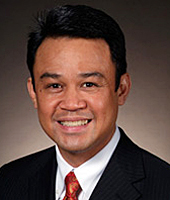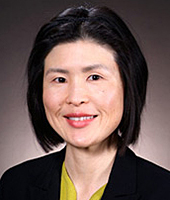AMES, Iowa -- Through his "Educate to Innovate" campaign, President Obama has championed the importance of educating more students to pursue science, technology, engineering and mathematics (STEM) fields in order to sustain the nation's economic growth and competitiveness globally. And two researchers from Iowa State University's Office of Community College Research and Policy (OCCRP) have now compiled research showing the value community colleges have in stimulating STEM interest among underserved populations.
Soko Starobin, an assistant professor of educational leadership and policy studies (ELPS), and Frankie Santos Laanan, an associate professor in ELPS, served as guest editors of the special issue of the Journal of Women and Minorities in Science and Engineering on the role community colleges play in broadening participation among women and minorities in STEM fields. In the issue, which was published in August, they included six articles providing evidence of how community colleges have helped increase STEM participation among traditionally underrepresented populations.
"The main takeaway of this volume is how it informs policymakers, both on the federal and state level, of the unique role community colleges play in the human capital development related to STEM fields," said Laanan, who is principal investigator of Iowa State's "Pathway to a Science, Technology, Engineering and Mathematics (STEM) Degree" program, which is supported by the National Science Foundation.
Stressing community college pathways:
The editors also emphasize the need to consider the educational pathways taken by community college students when assessing their impact on STEM-related fields.
"We cannot isolate community colleges as a terminal degree nor just a source of career and technical education, but we really need to treat them as a pathway to the baccalaureate and beyond -- especially in the STEM context," said Starobin, who serves on a team of faculty members in OCCRP committed to addressing research focused in community college STEM education.
The issue concludes with an essay led by Elizabeth Hoffman, ISU executive vice president and provost, who serves on the National Science Board. Co-authored by Starobin, Laanan and Marisa Rivera, a lecturer and program coordinator in ELPS, the essay provides several policy recommendations to strengthen the role of community colleges in STEM education.
Their specific institutional policy recommendations include:
- Create STEM education that is vertically aligned and coherent from pre-K through the first years of higher education.
- Given the increasing role of community colleges in mathematics education, urge community colleges and four-year universities to work together regarding the content of the mathematics courses offered at both institutions.
- Seek strong leadership at four-year institutions to proactively transform the institutional and/or faculty members' negative perceptions and attitudes toward community college transfer students in mathematics and science courses.
- Urge student affairs practitioners from both community colleges and four-year institutions to develop a partnership to better advise students who pursue a STEM degree.
ISU partners with state's community colleges
Several recommendations require development of partnerships between community colleges and four-year institutions to create a seamless pathway. Iowa State has already established Admissions Partnership Program (APP) agreements with all 15 community colleges in Iowa, making it easier for community college students to transfer to ISU for their four-year degrees.
Iowa State President Gregory Geoffroy will host Iowa community college presidents and CEOs for an annual day-long summit at the university this Thursday, Sept. 2.
The authors also propose these state policy recommendations:
- Work toward an articulated national standard regarding STEM course contents and sequences as students move on their national paths from high school to community colleges and four-year institutions.
- Make attracting and retaining well-prepared and highly
effective STEM instructors a higher priority at both
secondary and postsecondary institutions by:
1. Providing resources to increase STEM teacher compensation
2. Providing resources for future STEM teacher preparation
3. Creating and endorse STEM teacher certification guidelines
4. Coordinating STEM teacher preparation with National Content Guidelines - Work with the teacher/faculty union at the community college and high school levels to create differential pay to provide better compensation to teachers and faculty in STEM disciplines.
"The National Science Board actually talks about whether a state or independent school district should have differential pay for the STEM teachers, which is very controversial. But it's important for attracting and retaining highly qualified teachers," Starobin said. "Truly in the STEM context, we are competing against other industries, so if highly skilled prospective teachers can go to industries where they can earn more money -- they will go."
Linda Serra Hagedorn, interim chair of ELPS, also authored an article in the journal on math and science success and nonsuccess in community colleges.

